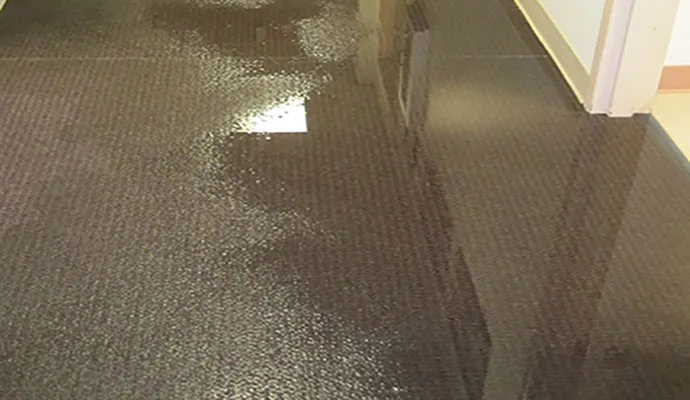
Spring means blooming flowers and warmer temperatures, but it also means an increased risk of severe storms. Heavy rainfall, melting snow, and unpredictable weather patterns can lead to significant property damage if you don’t take any precautions. Here are eight essential steps to safeguard your home and belongings from spring storms and flooding.
1. Inspect and Maintain Your Roof and Gutters
Your roof is your first line of defense against spring storms. After winter ends, it’s important to inspect it for loose or missing shingles, leaks, or any damage that could allow water to seep in. You should also clean out your gutters and downspouts, removing leaves, twigs, dirt, and other debris, to ensure you have proper drainage and prevent water from pooling around your foundation. A storm will take advantage of a weak roof or gutters, so it’s crucial that they are in good condition.
2. Seal Cracks and Gaps
You should regularly examine your home’s foundation, walls, and windows for any cracks or gaps that could let water in. You can use caulk or waterproof sealant to close up these weak points and reduce the risk of flooding inside your home. If you notice big cracks or gaps, you may want to call a professional to help fix them.

3. Elevate Electrical Systems and Appliances
To prevent electrical damage, you should elevate outlets, wiring, and appliances like water heaters and furnaces in flood-prone areas of your home. This precaution can reduce costly repairs and safety hazards in the event of a flood.
4. Improve Drainage Around Your Home
Proper landscaping and drainage are crucial in protecting your home from spring storms and flooding. Ensure that the ground slopes away from your home’s foundation to prevent water from accumulating. Consider installing French drains, rain gardens, or a proper grading system to channel water safely away from your property; utilize your yard or garden to protect your home from flooding.
5. Install a Sump Pump
If your basement is prone to flooding, you should invest in a sump pump. This device accumulates groundwater in a designated pit known as a “sump pit” then pumps it away from the foundation of your house in a preventative measure against flooding. It detects when water levels are too high and works to remove excess moisture through a drainage pipe.
If you have already invested in a sump pump, ensure it’s working correctly and has a backup battery in case of a power outage. If a sump pump malfunctions, it can contribute to flooding in your home.
6. Keep an Emergency Kit Ready
You should prepare for unexpected spring storms and flooding by putting together an emergency kit that includes flashlights, batteries, bottled water, non-perishable food, first aid supplies, and important documents in waterproof containers. Having a plan in place can make a significant difference in an emergency.
You should also create an emergency plan if you live in a flood-prone area. This plan should include the actions you’ll take to protect your home and have information regarding a meeting place and who to contact. Everyone should know their role and responsibilities, so there is no confusion during an emergency.
7. Review Your Insurance Coverage
Most standard homeowner’s insurance policies do not automatically cover flood damage. Check your policy and consider purchasing flood insurance if necessary to ensure your home and belongings are adequately protected. Some policies won’t go into effect for 30 days, so make sure you sort out your insurance before spring storms arrive.

8. Invest in Other Protective Measures
If you live in a flood-prone area, consider investing in preventive measures such as waterproof paint or flood sensors. A waterproof exterior paint helps shield walls, doorways, and windows from receiving water damage and letting moisture into your home. You could also consider making a floodwall out of water-tight materials, such as concrete or masonry, to help prevent water from entering window wells or stairwells and protect indoor utilities.
Flood sensors alert you when water seeps into places it shouldn’t be. This allows you to take action before you receive worse damage to your property. Flood sensors should be installed near vulnerable areas, such as basements, around water heaters, and in utility rooms.
Protect Your Property From Costly Flood Damage
Spring storms are unpredictable — you never know when flooding will strike. But with the right preparation, you can significantly reduce the risk of damage to your property. By taking proactive measures, you can protect your home, belongings, and loved ones from any challenges spring weather may bring.
